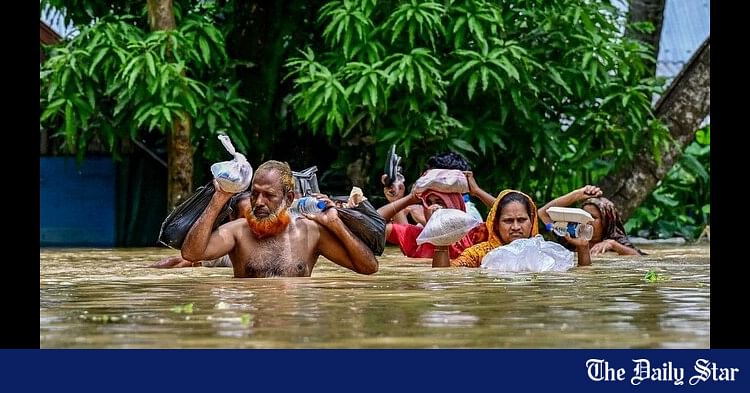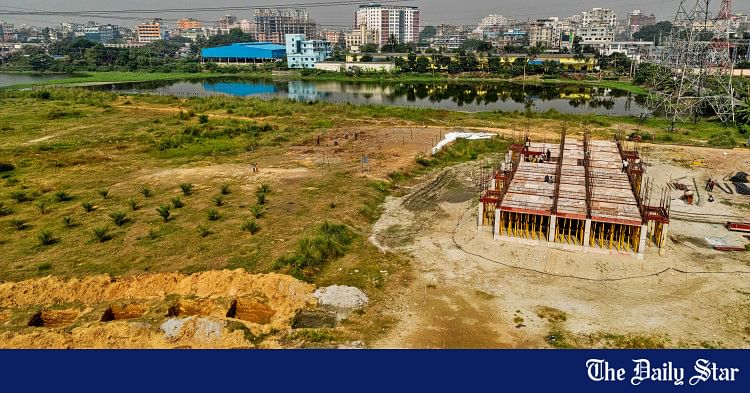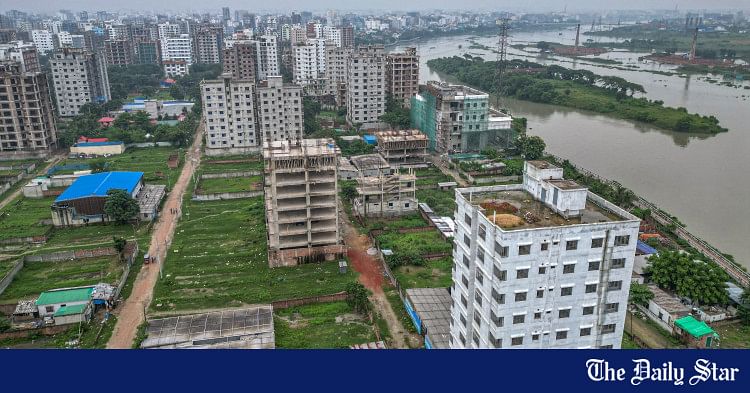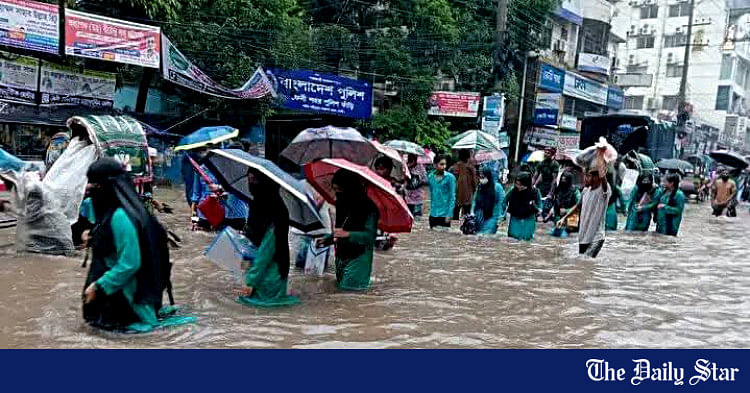Saif
Senior Member
- Joined
- Jan 24, 2024
- Messages
- 15,417
- Nation

- Axis Group


To check prolonged flooding, we must restore our waterbodies
The plight of a canal in Habiganj calls for proper interventions
To check prolonged flooding, we must restore our waterbodies
The plight of a canal in Habiganj calls for proper interventions

VISUAL: STAR
Irrespective of where a canal or river is located in the country, hardly any waterbody has managed to escape the reach of land grabbers, especially those with political connections. The story of a canal within the haor region of Habiganj's Lakhai upazila is no exception. Over the last 20 to 25 years, nearly 15km of this 20km canal has been filled in and overrun with shops, houses, and other structures. This has compromised the natural drainage system of the haor, which connects to the Sutang River, causing waterlogging and inundating adjacent croplands for prolonged periods.
According to a report in this daily, most of those who encroached on this canal are local Awami League leaders and their cronies. The former chairman of the Lakhai upazila parishad, currently a fugitive following Sheikh Hasina's fall on August 5, had even built an approach road to his house occupying part of the canal. Unfortunately, when it comes to the encroachment of waterbodies and other natural resources, there seems to be hardly any difference between AL and BNP, with the names of two BNP men and their relatives coming up among the alleged grabbers.
However, with a non-political government now in place and Syeda Rizwana Hasan, an environmentalist of considerable repute, serving as the adviser for environment, forest, and climate change, there is renewed hope that the authorities will take drastic actions to restore the canal, and all such bodies, by evicting the occupiers and removing illegal structures. Influential individuals sometimes exploit the vulnerability of locals as a pretext for encroaching on waterbodies, but such excuses should not impede eviction drives. In a climate-vulnerable country like Bangladesh, restoration of water bodies such as canals is becoming increasingly crucial. The prolonged flooding witnessed this year in the eastern region, where clogged and encroached waterbodies prevented floodwaters from draining, should serve as a warning call for us.
So, we urge the government to take urgent steps to restore these local waterbodies. However, a proper eviction process with sufficient notice issued to the occupiers must be followed. At the same time, ensuring post-eviction monitoring to prevent grabbers from reoccupying the canal area—a practice observed frequently under the previous regime—is also crucial.
The plight of a canal in Habiganj calls for proper interventions
VISUAL: STAR
Irrespective of where a canal or river is located in the country, hardly any waterbody has managed to escape the reach of land grabbers, especially those with political connections. The story of a canal within the haor region of Habiganj's Lakhai upazila is no exception. Over the last 20 to 25 years, nearly 15km of this 20km canal has been filled in and overrun with shops, houses, and other structures. This has compromised the natural drainage system of the haor, which connects to the Sutang River, causing waterlogging and inundating adjacent croplands for prolonged periods.
According to a report in this daily, most of those who encroached on this canal are local Awami League leaders and their cronies. The former chairman of the Lakhai upazila parishad, currently a fugitive following Sheikh Hasina's fall on August 5, had even built an approach road to his house occupying part of the canal. Unfortunately, when it comes to the encroachment of waterbodies and other natural resources, there seems to be hardly any difference between AL and BNP, with the names of two BNP men and their relatives coming up among the alleged grabbers.
However, with a non-political government now in place and Syeda Rizwana Hasan, an environmentalist of considerable repute, serving as the adviser for environment, forest, and climate change, there is renewed hope that the authorities will take drastic actions to restore the canal, and all such bodies, by evicting the occupiers and removing illegal structures. Influential individuals sometimes exploit the vulnerability of locals as a pretext for encroaching on waterbodies, but such excuses should not impede eviction drives. In a climate-vulnerable country like Bangladesh, restoration of water bodies such as canals is becoming increasingly crucial. The prolonged flooding witnessed this year in the eastern region, where clogged and encroached waterbodies prevented floodwaters from draining, should serve as a warning call for us.
So, we urge the government to take urgent steps to restore these local waterbodies. However, a proper eviction process with sufficient notice issued to the occupiers must be followed. At the same time, ensuring post-eviction monitoring to prevent grabbers from reoccupying the canal area—a practice observed frequently under the previous regime—is also crucial.











































